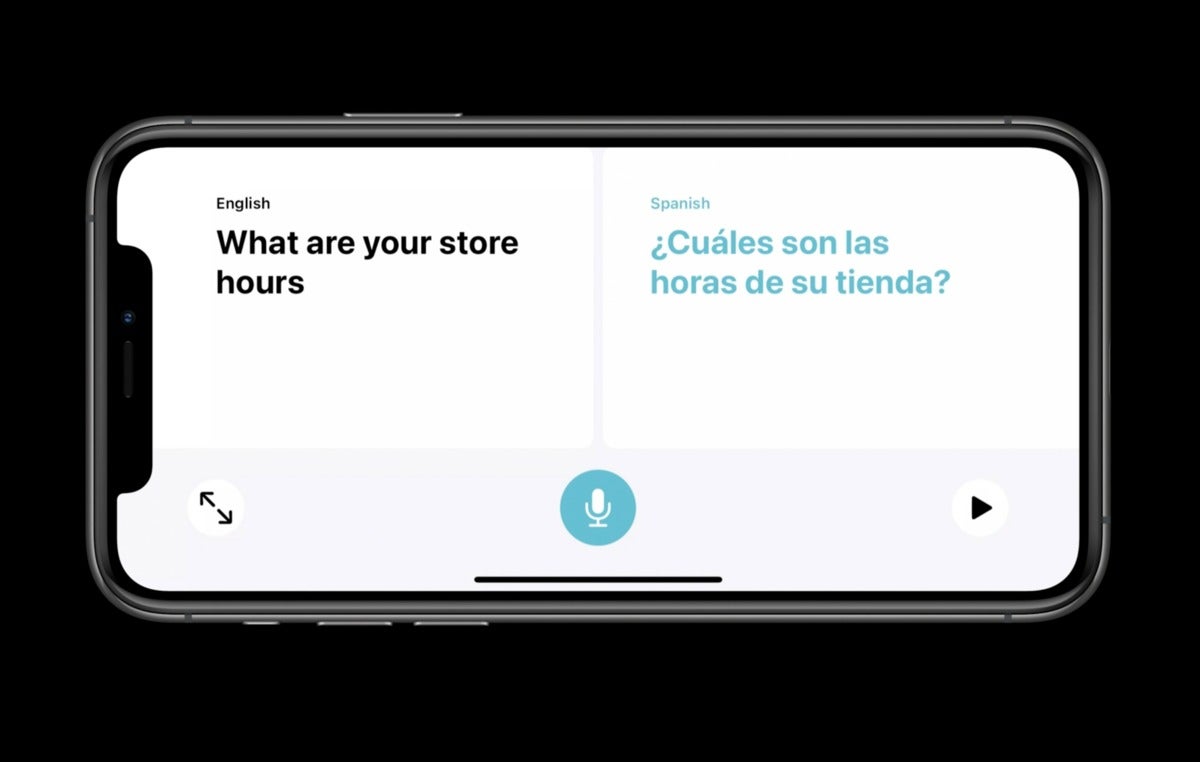iOS 14 - Review
Introduction
Apple iOS 14 was unveiled at WWDC20 in June, and it was made available on September 17 2020. Its launch is peculiar because it did not go live side by side with new iPhones as is usually the case. The new iPhone models for 2020 will probably see their premiere pushed back to October.
The list of new features in iOS 14 is long - much longer than the latest Android 11, which we reviewed recently, too.
Most importantly, however, the new v.14 expands the OS with two options that hold the potential to radically transform the way you interact with the OS. We are talking about the homescreen widgets and the app drawer - two staples of Android.
iOS 14 review: Compatibility
iOS 14 is available as a free over-the-air update. To download iOS 14, go to the Settings app on your iPhone, select General and then Software Update. From there, you can follow the on-screen instructions.
You’ll need an iPhone 6s or later to run iOS 14. (The original iPhone SE and the 7th gen iPod touch are also on the list of compatible devices.) That means if you bought a flagship iPhone as far back as five years ago, you can still run the latest version of Apple’s mobile software. The new software will come pre-installed on the iPhone 12 as well, when those new models ship next month.
For my iOS 14 review, I tested the software update on both an original iPhone SE and a newer iPhone 11 Pro Max. Older phones should have no problem running the update, though I did notice a hit on battery life for my iPhone SE.
iOS 14 review: Widgets
Widgets offer at-a-glance information to the kind of data you’d want instantaneously, without forcing you to launch an app — think the current temperature, upcoming appointments or maybe the latest headlines and sports scores. Up until now, widgets have lived on the Today screen, which still forces you to scroll rightward until you run out of home screens. iOS 14 saves you the trouble, by letting you place Widgets right on your home screen where they live among your apps.
Major Messages improvements
Messages is arguably the most important mobile app in Apple’s arsenal. Apple is adding some big features to Messages across iOS, iPadOS, and macOS.
You can now pin up to nine conversations, keeping them at the top of your Messages stack. That is a relief to anyone who has a lot of different conversations going, or just gets a lot of two-factor authentication codes over SMS.
Group conversations are getting a lot better, too. You’ll see images of everyone who is in the group, with the most recent people first, and can give groups a name and its own image, too. You can reply to messages in-line, so its easier to know that you’re replying to the thing Mike said four messages ago, instead of Carol’s more recent reply. And you can direct a message to a single person when you mention them by name, and even set Messages only to notify you when your are mentioned.
Memoji updates
Apple is not making any huge fundamental shifts with Memoji in iOS 14, but it is adding a lot more options to make it easier to express yourself.
There are seven new hairstyles, 16 new pieces of headwear, three new memoji stickers, face coverings and an expanded range of ages.
Memoji have been refined with new facial and muscle structure to make them more expressive, too.
Maps improvements
Maps is going to have to keep improving for years in order to earn back a good reputation, but Apple is well on its way to making it a great experience for everyone.
The last year saw the rollout of new map data to the entire United States, and they’ll come to more countries later this year. They really do make a massive difference in the usability of the Maps app.
Also new this year are cycling directions that can take into account elevation changes, bike lanes, and stairs. Maps will show the location of known speed cameras and red light cameras, route you around congestion zones in cities that have regulated traffic areas, and can provide specialized electric vehicle routing. That latter feature lets you add your electric vehicle to your iPhone and let you keep track of things like your current charge, and show compatible chargers on route to your destination.
The Maps app will help you find places to visit in major cities with a new Guides feature. Apple is working with major third-party travel companies to provide guides to landmarks, sightseeing, restaurants, hotels, shopping, and other activities.
Camera improvements
Apple typically saves major camera improvements for new iPhone models, but it is bringing a number of very welcome improvements to the Camera app in iOS 14.
To begin, the Quick Take video mode enjoyed by the iPhone 11 (press and hold the shutter button in Photo mode to take a video) will come to iPhone XR and iPhone XS. And all iPhones will get the ability to change video resolution and frame rate in the Camera app, rather than digging into the Settings app.
On iPhone 11 and 11 Pro, there is a small steady guidance indicator when taking Night Mode shots.
In addition to the single-shot exposure lock, there is now an exposure compensation slider that lasts for an entire session whether taking photos or videos.
Maybe the thing everyone will notice most is much faster shot-to-shot performance. On an iPhone 11 it’s up to 90 percent faster, time to first shot is up to 25 percent faster, and Portrait shot-to-shot is up to 15 percent faster. There is an option in Settings to prioritize faster shooting, at the expense of making it take just a tiny bit longer before the photo is processed.
FaceTime improvements
On “supported devices,” FaceTime calls get a bump in quality, up to 1080p.
While it won’t affect many people, here’s a cool application of AI technology: If you’re in a group FaceTime call and someone is using sign language, your iPhone will detect it and make that person more prominent.
And do you remember how iOS 13 had a neat feature where it would tweak your eyes to make it look like you were looking at the camera, instead of down at your display? That “eye contact” feature never ended up shipping, but it’s back in iOS 14.
Keyboard tweaks
The dictation feature is now better and works entirely on your device, but that is not the big-ticket item. The big-ticket item is that the emoji picker now has a search bar, just like it does on the Mac. Finally
Privacy enhancements
Apple takes privacy very seriously, and has included several important new privacy features in iOS 14.
You can give apps your approximate location instead of your exact location (perfect for a weather or sports app), for example. When an app asks to access your photos, you can select specific photos to give it access to, instead of your whole library.
While an app is accessing your camera, a little green dot will show in the status bar. There’s an amber dot for when your microphone is accessed. Because some apps ask for permission to access your camera or microphone for legit reasons, but then watch or listen to you when you’re not expecting it.
The App Store will now show detailed privacy information about each app before you download it, too.
Apple is also making it easier for you to switch your app logins to Sign in with Apple, if the developer wishes to support it.
The Translate app
Apple’s got a new first-party app called Translate, and it’s basically the Apple version of the popular Google Translate app.
Just pick two languages, hit the microphone button, and the app will listen to your voice and provide text and voice translations. You can even download many languages to your device and it’ll work entirely offline.
Apple Arcade
Apple is updating the Arcade tab in iOS 14 to show you the games your Game Center friends are playing, quickly access games you played recently (even if it was on a different device), and make it easier to find and sort through all the Arcade games.
The in-game Game Center dashboard is enhanced, too. You can more easily see your profile, your friends, and track your achievements.
ARKit 4
Apple keeps expanding its augmented reality tools for developers, even if it isn’t making a lot of impressive features for users yet.
ARKit 4 tools let developers place Location Anchors so an AR object can occupy a specific place in the real world. Like a virtual sculpture in a public square.
What’s more, any device with an A12 Bionic chip or later can do facial tracking with the front camera, even if it is not a TrueDepth module—this could mean that Animoji and Memoji are coming to more devices.
There is a new Depth API that lets developers build 3D mesh environments and per-pixel depth information on the latest iPad Pro with its LiDAR scanner. Presumably these features will be important on future iPhone Pro models, too.
Safari improvements
Safari is faster than ever in iOS 14, and more secure, too. You can access privacy reports for websites, and Apple will monitor saved passwords to see if any have been involved in recent data breaches.
Safari on iOS can even translate entire webpages without visiting a third-party service. Just tap the translation icon and it’ll translate compatible pages into English, Spanish, Chinese, French, German, Russian, or Brazilian Portuguese.
CarPlay
Apple’s car interface has a host of small but welcome improvements. There are new categories of apps allowed, including EV charging, parking, and food ordering apps.
You can ask Siri to share your ETA with someone, and it will send them a Message that lets them track your progress en route to your destination.
There are new developer tools for audio, messaging, and VoIP apps, which should allow developers to make better experiences in those app categories.
Oh, and your CarPlay interface can have a background wallpaper now, too.
Car Keys
Apple’s one of the first to bring a standardized version of digital car keys to your iPhone (Manufacturers like Tesla have had their solutions for some time).
So, some apple iphones with iOS 14 you can buy in discount by clicking on shop now below.

 Apple
Apple








